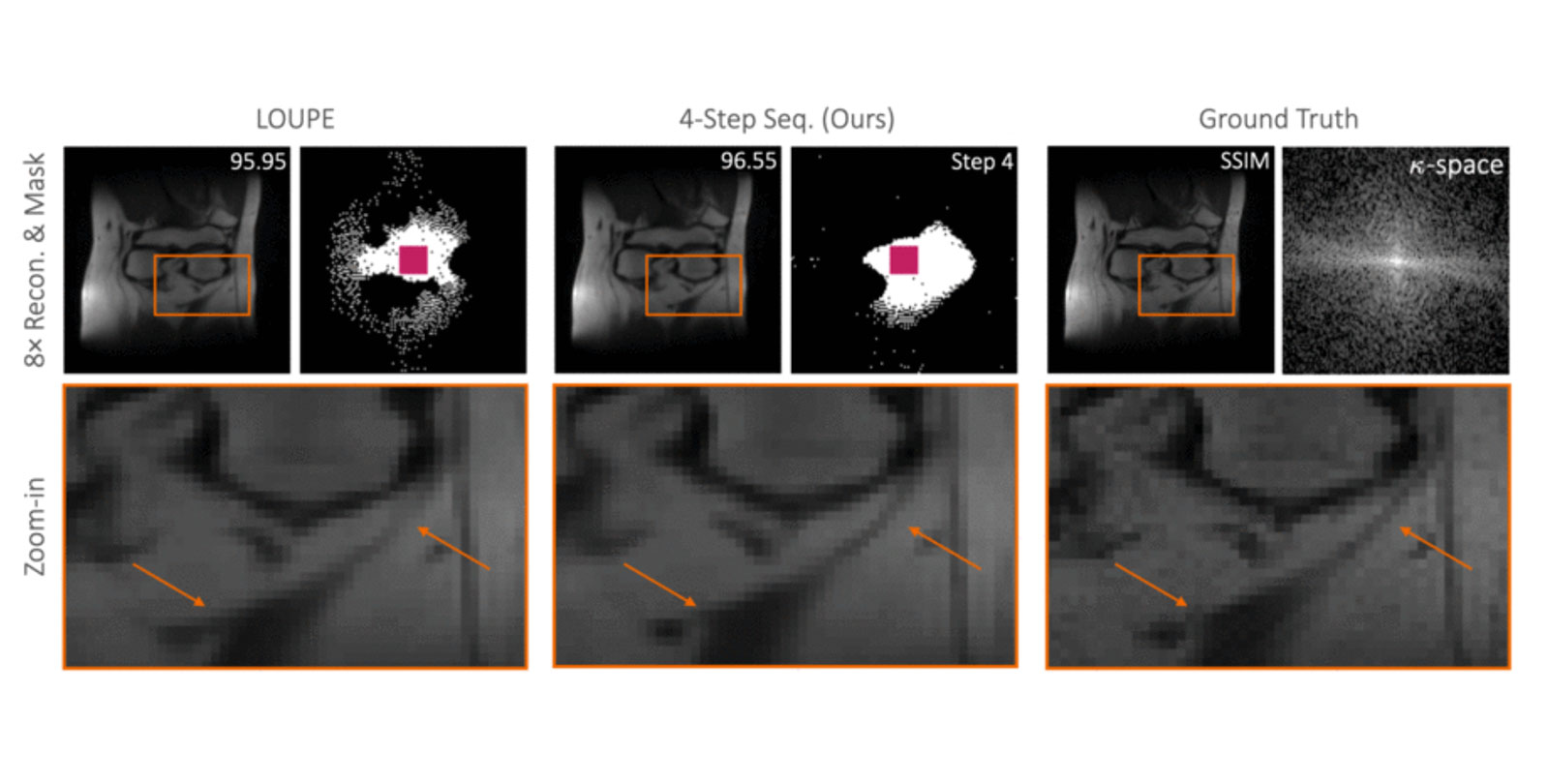AI4Health
Accelerating the MR Imaging Pipeline
—

Magnetic Resonance Imaging or MRI is a widely used imaging technology for clinical diagnosis and biomedical research. MRI has many advantages: it's non-invasive, requires no radiation, and results in images with excellent tissue contrast. The central challenge in MRI is its slow acquisition taking up to half an hour to collect measurements which leads to high cost, patient discomfort, and significant reconstruction artifacts when the patients move.
What makes acquisition so slow? MR image reconstruction measurements are taken in what is known as k-space, which means that the scanner takes spatial frequency measurements of the underlying anatomical image. One way to accelerate MRI is to collect fewer measurements and reconstruct anatomical images from only partial k-space data. The acceleration strategy introduces two big challenges: (1) knowing where to sample in the k-space and (2) developing a reconstruction method that accurately recovers high quality images from only the partial data by filling in the missing information without hallucinating fake structures.
So how should we go about addressing these challenges? Recovering a high-fidelity anatomical image from subsampled measurements requires close cooperation between two components: (1) a sampler that chooses the subsampling pattern and (2) a reconstructor that recovers images from incomplete measurements. In the past literature on accelerated MRI imaging, the design of sensing pattern is often separated from that of the design of the reconstruction algorithm.
We leverage the sequential nature of MRI measurements, and propose a fully differentiable framework that jointly learns a sequential sampling policy simultaneously with a reconstruction strategy. This co-designed framework is able to adapt during acquisition in order to capture the most informative measurements for a particular target. Experimental results on the fastMRI knee dataset (see the figure above) demonstrate that the proposed approach successfully utilizes intermediate information during the sampling process to boost reconstruction performance. In particular, our proposed method outperforms the current state-of-the-art learned k-space sampling baseline on up to 96.96% of test samples.
FURTHER READING
"End-to-End Sequential Sampling and Reconstruction for MR Imaging"
Principal Investigators

Yisong Yue

Katie Bouman